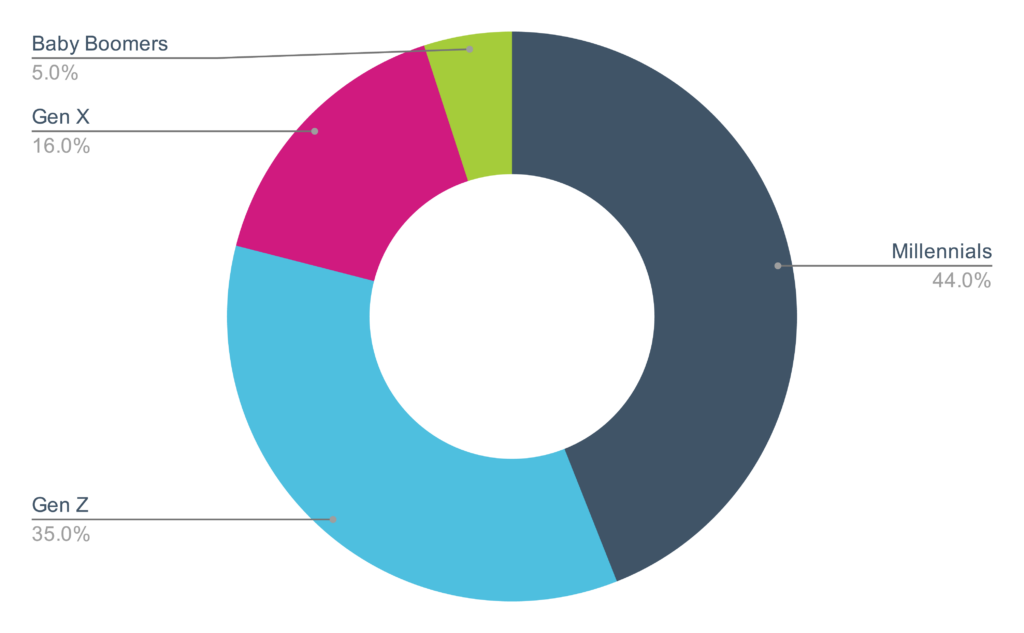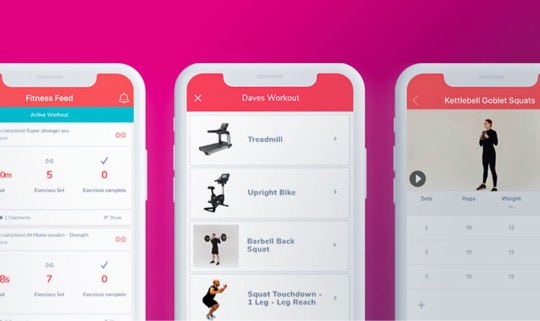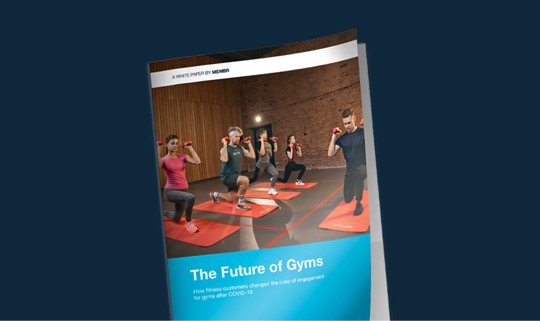It seems that coronavirus isn’t going anywhere, but exercisers are surely making their way back to the gym. With most of UK gyms reopening at the end of July, we recorded gym attendance nearly as strong as the one back in February.
Now, of course, we’ve seen some regions reopening and closing again due to second and third waves. Yet the goal to stay fit and healthy amidst the pandemic has only increased.
We took a further look at gym attendance across the world in the past month and this is what data’s showing us.
Who’s back in the gym?
Nearly 80% of those making a steady return to the gym are either Millennials (aged 26-40) or belong to Generation Z (aged 8-25). Collectively the two groups represent ‘Generation Active‘, as LesMills labelled them.

Gen X (aged 41-55) and the so-called Baby Boomers (aged 54-76) follow right behind, making up only a fifth of the gym visitors.
While younger generations are more active in the gym post-lockdown, they have also been dominating the digital fitness world in the last few years. You might close the gym, but you can’t simply take away the drive for fitness.
How different generations respond to COVID-19?
Millennials are in the lead with 44% of the total gym attendance after lockdown, but that’s hardly due to reckless thinking. On the contrary, according to experts this group is the most considerate among all generations. In other words, they are the responsible ones that would definitely clean the gym equipment after use.
As the generation most adoptive of technology, Gen Z follows behind with 35% of the total attendance. Often considered the most frivolous when it comes to coronavirus concerns, this group is indeed the least likely to experience major COVID-19 health complications. You might see them join group workouts, or follow a workout routine on the phone as they walk around the gym.
Gen X comes across as the most prepared group, since not long ago they lived through the financial crisis and survived to tell the tale. Coupled with Baby Boomers, they are both generations that grew up without the digital influence, so it’s hardly a surprise that their adaptability naturally translates into more outside fitness activities.
OK so what’s next?
The real challenge now is accepting that going forward we will need to pass through more periods of uncertainty. Everything is changing so fast that as soon as we enter a new set of ‘back to normal’ circumstances, the next anticipated phase has already been queued.
The past few months have accelerated the need for fitness alternatives, such as at home workouts, live classes & On Demand content. Exercisers everywhere went digital for their daily dose of fitness in whatever form it was available during lockdown. These alternatives might even completely replace traditional gym-going for certain groups, like vulnerable people, single parents and those working from home.
If you are a gym enthusiast, don’t worry. While gym patterns are expected to continue undergoing changes in the near future, the gym is likely to remain a safe shore for many still.
What we know with certainty is that exercise will remain an important lifestyle ingredient. Since 2020 hasn’t been cancelled yet, we’re keeping an eye on this year’s National Fitness Day whose slogan is Fitness Unites Us.













